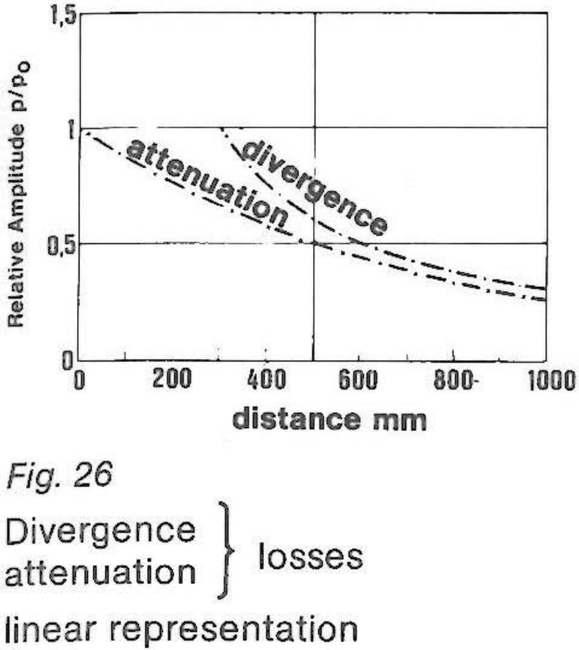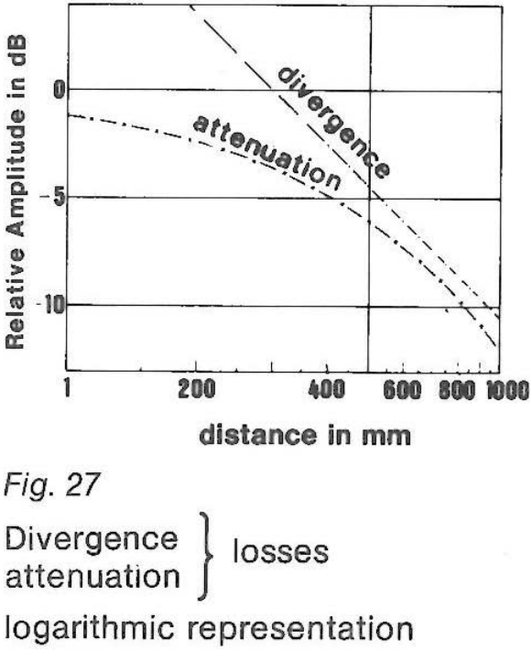
What causes attenuation of sound?
In this article:
- Sound Attenuation Results from Absorption and Scattering: As ultrasonic waves travel through materials, energy is lost due to internal friction (absorption) and redirection at microscopic interfaces (scattering), reducing signal strength.
- Divergence and Attenuation Losses Are Distinct: Divergence loss follows a logarithmic relationship with distance, while attenuation loss increases linearly, both contributing to the overall weakening of the sound wave.
- Frequency Significantly Influences Attenuation: Higher frequencies experience greater attenuation—absorption increases with the square of the frequency, and scattering losses rise even more steeply.
- Material Properties Determine Attenuation Coefficients: Different materials exhibit unique attenuation behaviors, which are quantified using attenuation coefficients (in dB/m) to guide probe and frequency selection.
- Compensation Techniques Must Address Both Loss Types: Electronic compensation systems must consider both divergence and attenuation effects to maintain accurate ultrasonic testing results over varying distances.
Not only the distance law, established by the divergence of the sound beam, is the reason that there is no sound pressure worthy of mention at greater distances. In a real material a sound wave also continually loses a part of its energy through conversion into another form of energy due to internal friction ( absorption). In addition a part of the sound wave is scattered from microscopic interfaces in every direction so that a signal propagating in a certain direction also loses energy due to scatter. Both effects together are known as sound attenuation. Attenuation losses refer to the whole of the transit path of the sound wave ( in echo Operation 2z).
With the coefficient a
In the dB system this is
ß is the attenuation coefficient in dB/m. lf one transposes in equation 17 one obtains the identical decadic relationship to equation 16:
When a sound wave propagates the total loss is calculated by adding the divergence loss VD determined by the probe and the attenuation loss VS resulting from the interaction between the sound wave and the material ( 19).
Divergence loss and attenuation loss depend upon the distance. In general the distance law is:
Further into the far ( leid, where the divergence loss is described by the 1/z law, the following formula develops:
Equations ( 21) or ( 22) show that divergence and attenuation losses do not display the same distance relationshiP. The divergence loss is proportional to the logarithm of the distance, the attenuation loss is directly proportional to the distance z ( figs. 26, 27). Electronic circuits for compensating the losses which are due to the distance may neither be correlated to the divergence law — Ig z nor to the attenuation law ( — z) alone.
Basically the sound attenuation increases with an increase in the frequency. if lt is a matter of pure absorption this occurs at the square of the frequency f, and with attenuation due to scatter with even higher exponent. Sound attenuation coefficients for different materials and at different frequencies are given in table 6.
How to test welds by the means of inclined ultrasonic beaming?








